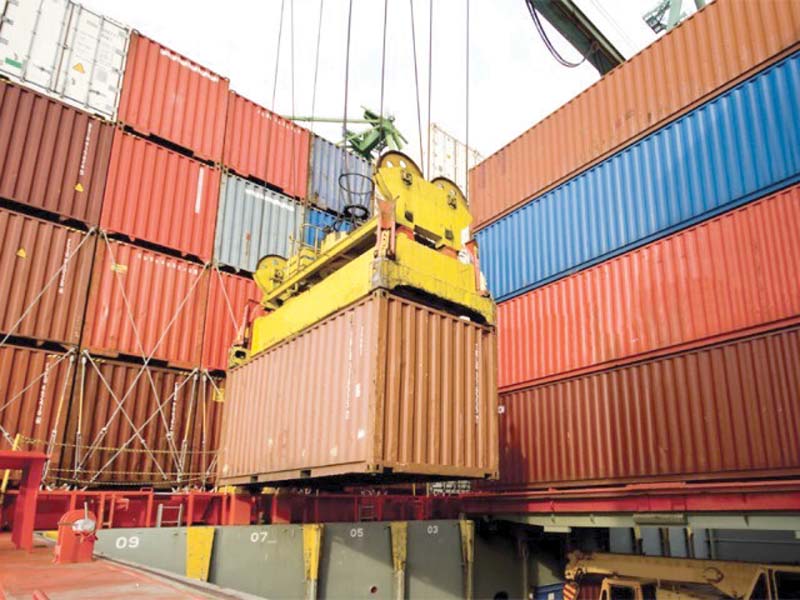
According to data provided by the State Bank of Pakistan and the Board of Investment, net FDI (inflows less outflows) into Pakistan rose 133% in FY16 and 4.6% in FY17.
The net FDI sourced from China showed the largest increase between FY15 and FY16 as it rose from $319.1 million to $1,063.6 million. In FY17, the net FDI inflow from China stood at $1,185.6 million.
What’s beyond CPEC
The second most prominent source was the Netherlands, which invested $463.4 million, followed by Turkey, which poured $135.6 million.
Pakistan received net FDI of $795.4 million in the power sector in FY17, followed by $493 million in the food industry and $467.7 million in the construction industry.
Similarly, it received net FDI inflow of $1,159.2 million in the power sector in FY16, $289 million in financial business, $248.9 million in oil and gas exploration and $236.7 million in the communications sector.
The power sector remained the highest recipient in both FY16 and FY17. The net inflow into financial business was reported at $64.3 million, communications at $28.6 million and oil and gas exploration at $157.6 million in FY17.
On the other hand, the net FDI inflow into major manufacturing industries such as textile, leather and leather products, cement and base metals was negligible in comparison to the FDI in power and construction sectors.
As approximately 50% of the net FDI inflow into Pakistan was sourced from China in FY17, it is crucial to understand the significance of Chinese FDI at the global level as it dominates the global production network, particularly across developing economies.
Biggest sources of FDI outflow
According to the “World Investment Report 2017: Investment and the Digital Economy”, the United States and China topped charts as the largest sources of FDI outflow.
The former reported $299 billion in FDI outflow and the latter reported $183 billion. FDI outflow from China increased 43% in 2016, which was the highest growth amongst top 10 sources of FDI outflow.
In 2016, China was the net outward direct investor as its multinational enterprises acquired assets abroad and gained access to newer markets. However, FDI outflows for China are 3.8% of its gross fixed capital formation (GFCF) and the FDI outward stock is 11.4% of its gross domestic product (GDP).
Assuming these are reasonable metrics to measure the capacity of an economy to expand its investments abroad, China may be currently under-investing abroad as the average percentage of FDI outflows in relation to GFCF for all Asian economies is 4.7% and the average percentage of FDI outward stock in relation to GDP for all Asian economies is 22.2%.
The total value of cross-border mergers and acquisitions by Chinese investors in 2016 was $92 billion. Similarly, China announced more than $110 billion worth of Greenfield investment projects overseas.
Both the indicators showed an approximately 80% increase from the value reported in 2015.
Furthermore, more than 10% of the global cross-border mergers and acquisitions were made by Chinese investors and more than 13% of all overseas Greenfield investment projects were announced by Chinese investors.
Multinationals
Considering the top 100 non-financial multinational enterprises (MNEs) in terms of total foreign assets owned, only two Chinese companies appear on the list, which is primarily dominated by MNEs from the US, UK and Germany.
However, 32 Chinese companies, inclusive of companies originating from Hong Kong, appear on the list of top 100 MNEs from developing and transition economies, with foreign assets worth over $674 billion and over one million employees in host countries.
On the other hand, nine out of 13 top state-owned financial MNEs in terms of total assets owned are Chinese. The Industrial and Commercial Bank of China (ICBC), China Construction Bank Corporation JSC and Agricultural Bank of China are the largest three with more than $8.9 trillion in total assets and over 1.3 million employees.
US anti-Pakistan rhetoric amid realities of CPEC
According to the data presented in the Chinese Statistical Yearbook 2016, overseas direct investment stock of Chinese investors was the highest in 2015 in leasing and business services, followed by financial intermediation, mining and wholesale and retail trade.
However, FDI outflow from China in manufacturing was gaining prominence as it more than doubled in value between 2014 and 2015.
OBOR initiative
The One Belt, One Road (OBOR) initiative involves more than 60 countries which own a combined FDI inward stock of $6 trillion.
The World Investment Report 2017 specifically mentions investments in power plants in Pakistan in cooperation with Chinese firms such as Power Construction Corporation and State Power Investment Corporation.
The report also discusses the importance of OBOR for Central Asian economies as investments are planned in various industries other than the extraction of natural resources.
For instance, $1.9 billion is planned to be invested in Kazakh agriculture, which involves relocation of tomato processing plants from China.
Even though a few OBOR-related projects are mired in controversies, the integration of Pakistan into the OBOR initiative is much needed as Pakistan faces challenges to upgrading its infrastructure.
External sources of finance are required to fund such large-scale projects, which may eventually increase the burden of debt on Pakistan.
Therefore, it is imperative that investment is also sought in export-oriented industries in order to increase the capability of the economy to generate the foreign exchange necessary to sustain and service the growing external debt as a result of investments in other sectors.
The writer is Assistant Professor of Economics and Research Fellow at CBER, IBA
Published in The Express Tribune, August 28th, 2017.
Like Business on Facebook, follow @TribuneBiz on Twitter to stay informed and join in the conversation.






1719053250-0/BeFunky-collage-(5)1719053250-0-270x192.webp)










COMMENTS
Comments are moderated and generally will be posted if they are on-topic and not abusive.
For more information, please see our Comments FAQ